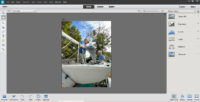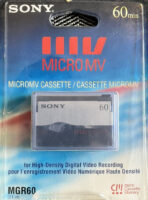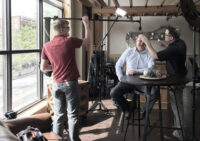You can contact Jon and see some of his work at his web site http://particular.tv/
(VU Webcast #3 Part 1)
Hey guys, I’m Hal Landen from VideoUniversity. Today we will see an overview of After Effects courtesy of Jon Mello. Jon’s originally from Bristol, Rhode Island. He does a lot of After Effects work for TV commercials and corporate video projects. Jon’s going to give us an overview of the After Effects Interface. This is a two part video. You can see both parts at the VideoUniversity blog. Here is Part 1.
——————————
Hi, I’m Jon Mello from VideoUniversity and today we’re going to be doing a rudimentary introductory look into Adobe After Effects. Most folks when they edit their video, tend to use the built in title generators and animation within their editing programs whether it be Premiere, Avis, Final Cut or Vegas. Sometimes After Effects can look daunting and look a little too complicated. Today we are working in After Effects CS3, but what I’m going to show you applies to all the versions of After Effects including CS4 all the way back to After Effects1 or Coso which was developed in Providence Rhode, Island close to where we are recording this.
This is the basic After Effects Interface and what we’ll do in this video is introduce each of the different regions of the Interface. First we’re going to start up here at the toolbar which is also shortcut drive and it probably behooves you to learn the shortcuts over the course of time. But right away we’re going to start at the pointer which is just like the selector tool in any other program. You can select things. The hand tool kind of shifts things around just like if you’re in Photoshop.
Here we have the zoomer which is just what you would expect it to be. And these are camera rotators which we’ll get into later when we get into 3D cameras. The Pan Behind Tool is also another handy thing like a slip edit tool or anchor point adjustment tool. Then you have masks and beziers just like if you were to put a garbage matt in with your editing program.
Here’s your text tool. You can have multiple options of horizontal text or vertical text. Next to it we have the paint brush, the clone tool, the eraser, and the pin which is used for a very powerful aspect of After Effects which is called Puppet Tool which we’ll get into in another episode.
Over here is the project bin which is like the bin in your editor where you have all the project information. This particular project just happens to be 864 by 486 with a square pixel aspect ratio. Over is your effect controls. Right now we do not have any effects applied to our video footage so this is empty. So going back to our project window, we see a preview of our video that is loaded. And in this particular sample, we have video I made for an organization that wanted a simple web site animation to show their web site in action. Now of course I could have just screen captured the web site and used it as a still or done a pan over, but when you have After Effects, it’s easy and fun to dress it up a little bit and throw some interactivity in which increases the production value.
Now we’re going to look to the right and see the viewer which is just like the view in your editor. You can zoom in on it and do all types of things. But this is where you would see the video you’re working on.
Over here we have all the different types of information you may need for your project: the color value information, the alpha value information, the x and y coordinates of the cursor. Then we have the audio which I don’t use too often because After Effects isn’t really an audio editor.
Down here we have the time controls. What we have in the time controls is just like the playback options in your editing program: play, frameback, roll back to the in point. You can select a frame rate for your previews where it loads all the frames into RAM and plays it back at the rate you set.
Here we have the skip frames. This is another way to save resources. If you have complex scene and you just want to see just the mechanics of it and not the fine aspects of it. You can skip up to five frames. It will play every fifth frame.
And here in Resolution we have even more control over handling the resources. The resolution can be set to auto, or any of these choices. “From Current Time” is where the play head is. And full screen will play back the Ram preview in the full screen mode.
Here is our character generator where we can have the list of different fonts available to you. This looks like the same as you’ll find in PhotoShop or Illustrator. The Paragraph information is the same as you’d expect for any of the imaging editing programs.
After Effects is very well known for its effects palette. Here are all of the effects. Now I do have some after market effects in here. After Effects comes well stocked from Adobe with tons of effects plug-ins you can apply to your footage. You can manipulate these effects in an infinite number of ways.
In other videos we’ll look at some of the more popular plug-ins such as Trap Code Plug-ins. These are always a crowd-pleaser. We have Shine, Star Glow and other effects you see on television commercials.
——————-
Thank you, Jon, for that helpful introduction to the After Effects Interface. You can see Part 2 of this After Effects overview in the VideoUniversity blog. Please visit VideoUniversity.com. If you have questions about AfterEffects or comments, we’d love to hear from you. Some people make comments on YouTube, but we don’t check Youtube very often so to ensure that we see your comments please make them on VideoUniversity.com
Thanks for watching.
Happy Trails!






Recent Comments